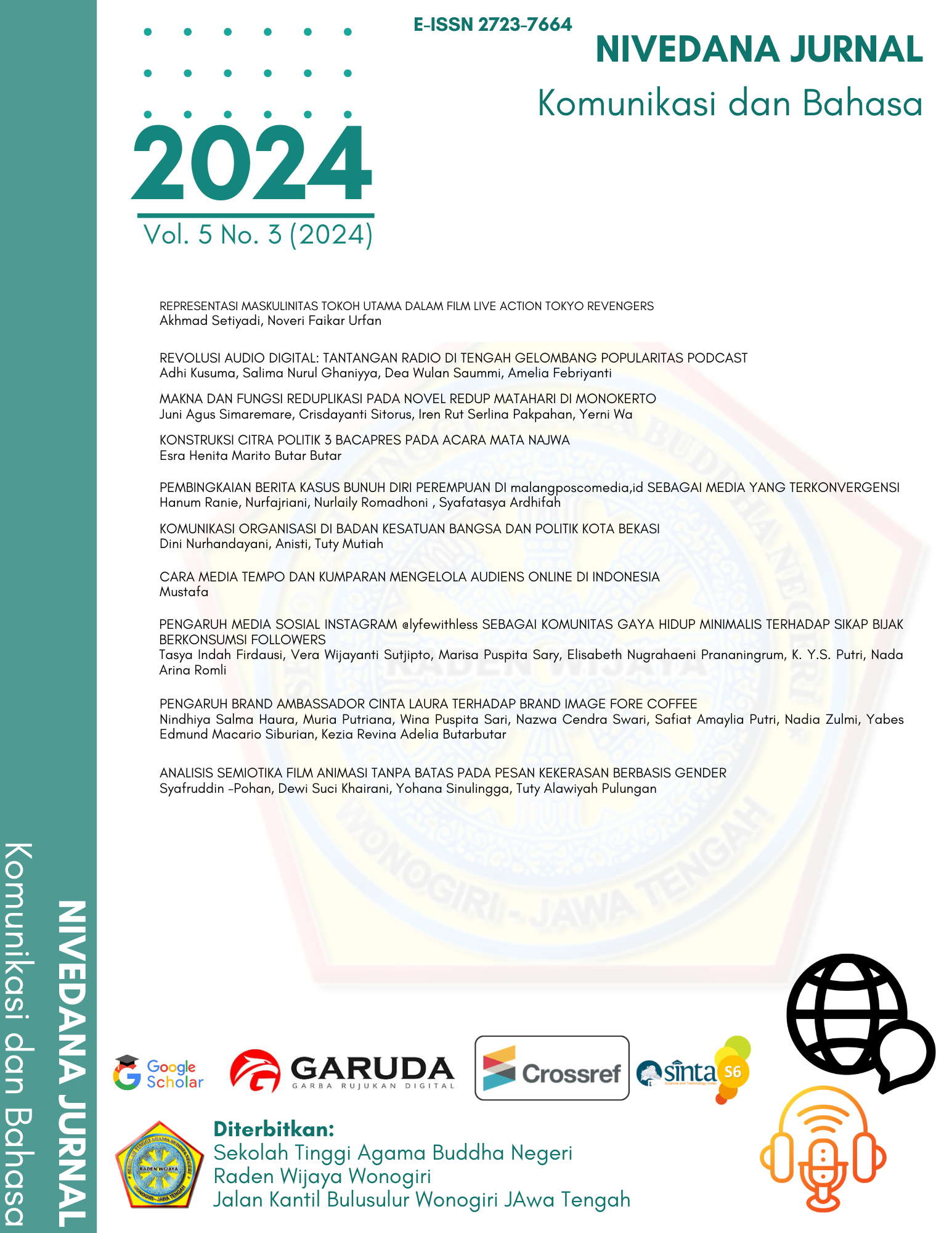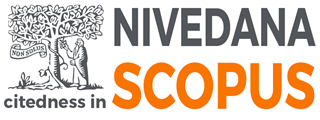KOMUNIKASI ORGANISASI DI BADAN KESATUAN BANGSA DAN POLITIK KOTA BEKASI
Abstract
The Bekasi City National Unity and Political Agency (Kesbangpol) is a local government agency that has the responsibility of facilitating and coordinating various activities related to national unity, politics, and community protection in the Bekasi City area. In carrying out its duties, the Bekasi City National and Political Unity Agency (Kesbangpol) prioritizes the importance of communication between leaders and employees in managing internal tasks within Kesbangpol. organizational communication is a vital process in which messages are created, exchanged, and interpreted between communication units in an organization. This study aims to determine how organizational communication in the Bekasi City Kesabangpol Agency. This research uses descriptive qualitative research with a case study approach. Using observation, interview and documentation methods as instruments in data collection. The results showed that the communication pattern at Kesbangpol Bekasi City was very open and participatory, in accordance with DeVito's theory. The use of communication media such as WhatsApp groups facilitates the flow of information, allowing direct interaction between divisions and levels. Openness between superiors and subordinates and mutual respect strengthen teamwork and organizational effectiveness. Although there are challenges such as miscommunication, good coordination is able to overcome them quickly and efficiently.
References
Brahmana, D. A. B., & Sitepu, E. (2020). Pola Komunikasi Organisasi Dalam Peningkatan Kinerja Pegawai Di Kantor Lurah Gung Leto Kecamatan Kabanjahe. Jurnal Ilmiah Ilmu Komunikasi, 5, 96–104.
Fiantika, F. R., Wasil, M., & Jumiyati, S. (2022). Metodologi Penelitian Kualitatif (Y. Novita, Ed.). Padang: Pt. Global Eksekutif Teknologi.
Hasanti, I. D. (2019). Analisis Komunikasi Organisasi Antara Event Project Team dan Account Executive di Event Organizer Twisbless. Jurnal Komunika : Jurnal Komunikasi, Media Dan Informatika, 8(1), 32. https://doi.org/10.31504/komunika.v8i1.2072
Indriani, W. (2022). Analisis Komunikasi Organisasi Antara Pimpinan Dan Bawahan Dalam Meningkatkan Kinerja Karyawan Di Pt. Tasma Puja Kabupaten Kampar. Fakultas Ilmu Komunikasi, 80.
Iskandar, D. (2021). Strategi Komunikasi Organisasi Dalam Membangun Loyalitas Kerja Pegawai. PERSEPSI: Communication Journal, 4(1), 31–42. https://doi.org/10.30596/persepsi.v
Nur’aini, R. D. (2020). Penerapan Metode Studi Kasus Yin Dalam Penelitian Arsitektur Dan Perilaku. INERSIA: LNformasi Dan Ekspose Hasil Riset Teknik SIpil Dan Arsitektur, 16(1), 92–104. https://doi.org/10.21831/inersia.v16i1.31319
Putra, A. B., & Pribadi, M. A. (2020). Interaksi Simbolik dalam Kegiatan After Sales di Dealer Nissan (Studi Kasus PT. Wahana Wirawan). Prologia, 4(1), 135. https://doi.org/10.24912/pr.v4i1.6453
Roskiana, S., & Haris, I. (2020). Komunikasi Dalam Organisasi (Teori dan Aplikasi): Vols. i–viii. Gorontalo: UNG Press.
Siregar, R. T., Enas, U., Putri, D. E., Hasbi, I., & Ummah, A. H. (2021). Komunikasi Organisasi. In Komunikasi Organisasi (1st ed.). Bandung: WIDINA BHAKTI PERSADA BANDUNG.
Sugiyono. (2019). Metode Penelitian Kualitatif,Kuantitatif dan R&D (Sutopo, Ed.). Bandung: Alfabeta.
Yunus, Muh. R., & Karundeng, D. F. (2021). Pola Komunikasi Antara Pimpinan Dan Karyawan Dalam Meningkatkan Kinerja Karyawan Pada Pt Wapoga Mutiara Industri. COPI SUSU: Jurnal Komunikasi, 3(2), 50–69.
Zamzami, & Sahana, W. (2021). Strategi Komunikasi Organisasi. Journal Educational Research and Social Studies, Volume 2 N, 25–37.
 DOI :
https://doi.org/10.53565/nivedana.v5i3.1393
DOI :
https://doi.org/10.53565/nivedana.v5i3.1393


















